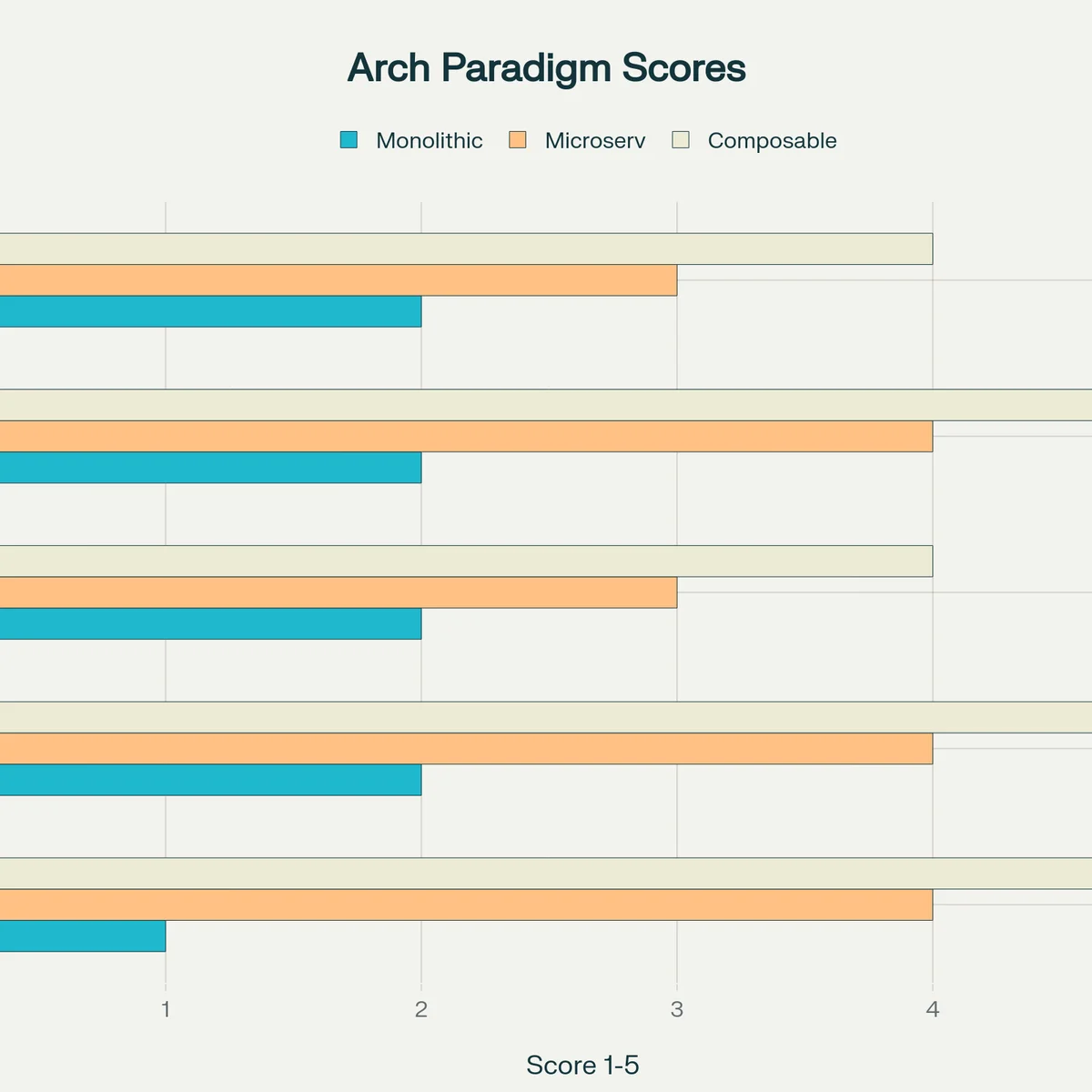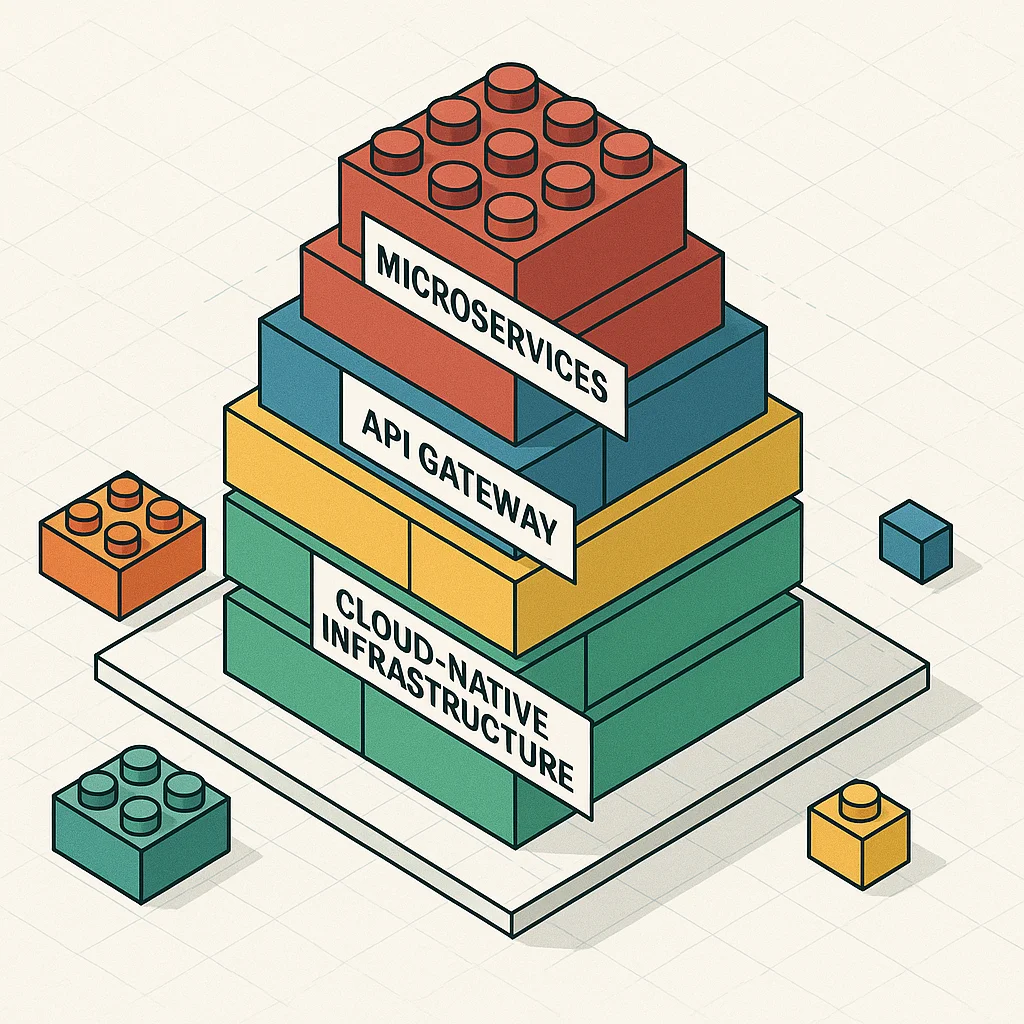An ever-shifting business landscape demands digital platforms that evolve as fluidly as the markets they serve. Composable architecture—built on modular, loosely coupled building blocks—has emerged as today's most resilient software strategy. This article explains the concept in clear English, offers a blueprint for implementation, and provides decision trees that help architects choose the right patterns for a modular platform.
1. From Monoliths to Lego-Style Systems
Traditional monoliths bind all capabilities in one release cycle, so any change risks cascading regressions. Microservices improved the situation, yet many teams still struggle with service sprawl and inconsistent APIs. Composable architecture goes a step further:
- Breaks functionality into Packaged Business Capabilities (PBCs)—self-contained, API-first modules mapped to business outcomes.
- Relies on MACH principles (Microservices-based, API-first, Cloud-native, Headless) for plug-and-play agility.
- Embraces event-driven and asynchronous patterns to reduce temporal coupling.
Comparative Snapshot

Attribute comparison across architecture paradigms
2. Core Design Tenets of Composability
| Principle | Practical Implication | Representative Pattern | | :-- | :-- | :-- | | Modularity | Swap or upgrade one capability without retesting the whole stack | Plugin pattern | | Loose Coupling | Services interact only via versioned interfaces; no direct database calls | Event-Driven Architecture | | Discoverability | Registry catalogs capabilities so teams can reuse before they rewrite | Service Registry pattern | | Autonomy | Each PBC owns its data and deployment pipeline | Database-per-Service | | Orchestration | Cross-capability workflows via API gateway or choreography | Saga / Chained Microservice |
3. Blueprint: Building a Modular Platform
The following layered diagram shows how to compose a platform from interchangeable blocks.

Composable architecture blueprint visualized as LEGO-like blocks.
Layer-by-Layer Breakdown
-
Experience Layer (Headless UI)
- React/Vue front-ends consume GraphQL or REST.
- Personalization widgets injected as separate PBCs.
-
Orchestration Layer
- API Gateway aggregates PBC calls; BFF (Backend for Frontend) tailors responses per channel.
- Event bus (Kafka / SNS) broadcasts domain events to decouple sync workflows.
-
Capability Layer
- PBCs such as Pricing, Identity, or Order Management deploy independently.
- Each exposes OpenAPI specs and publishes domain events.
-
Data & Intelligence Layer
- Polyglot persistence (PostgreSQL, MongoDB, S3) per capability.
- Feature stores feed AI models packaged as separate PBCs.
-
Foundation Layer
- Cloud-native infrastructure with IaC, service mesh, and observability assets.
4. Decision Trees for Architects
4.1 Choosing a Communication Style
Need immediate client response?
│
├─ Yes → Request/Response (sync) → Consider REST or gRPC
└─ No → Asynchronous Event-Driven
├─ High throughput? → Kafka topic
└─ Point-to-point? → Durable queue
4.2 Selecting Module Granularity
Is capability domain-wide? → PBC
│
└─ Service shared by <3 teams? → Microservice
└─ Otherwise keep within module to avoid chatter
4.3 Database Strategy
Strict consistency required?
│
├─ Yes → Shared DB schema with clear ownership boundaries
└─ No → Database-per-Service + Saga for eventual consistency
5. Governance and Culture Shifts
- Product-aligned teams manage each PBC end-to-end.
- Contract-first development: APIs reviewed like code; breaking changes require version bump.
- Platform Engineering supplies golden paths (templates, CI/CD, observability), letting teams focus on business logic.
6. Risks and Mitigations
| Risk | Mitigation | | :-- | :-- | | Service Sprawl | Capability catalog, ownership matrix, periodic pruning | | Latency Overhead | Co-locate chatty services; use smart API gateway caching | | Governance Drift | Central schema registry and automated contract tests | | Skill Gap | Internal training on domain-driven design and event modeling |
7. Conclusion
Loose coupling is no longer optional; it's the baseline for digital resilience. By combining modular PBCs, event-driven communication, and disciplined platform governance, composable architecture delivers faster feature velocity, superior scalability, and future-proof flexibility. The next strategic question is not whether to adopt composability, but how quickly you can realign teams and tooling to reap its competitive edge.
This article explores the fundamental shift toward composable systems and provides practical guidance for architects building resilient, scalable platforms. Want to discuss how composable architecture could transform your organization? Get in touch to explore implementation strategies.